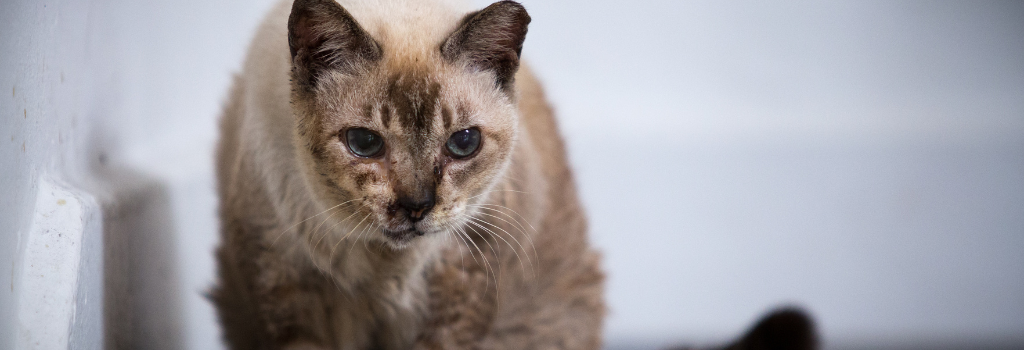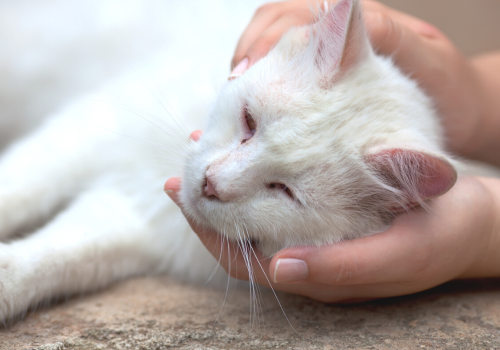Cat Pain Management
Cats are great at masking their pain and often find remote parts of your home in which to hide, which makes it difficult for owners to notice a problem and seek veterinary help to alleviate their discomfort. While cats hide when in pain, the injury or illness can progress and cause even more significant pain. At Bridge Veterinary Hospital, we work extremely hard to bring you factual information you can trust, so we’ve taken the most frequently asked questions about cat pain management and answered them here as thoroughly and accurately as possible.
If you’re looking for a highly trained veterinarian in Point Pleasant, NJ, we’d love to see your cat for an exam if you think they might be in pain, so please call us at (567) 361-3407.
How will I know if my cat is in pain?
Cats are notorious for hiding their discomfort, so it is important to pay attention to changes in your pet’s behavior, as they could indicate pain. Here are some signs and symptoms of pain in cats:
- Behavioral changes: Unusual aggression, hiding, increased irritability, withdrawal from social interactions, avoidance of being handled or touched.
- Grooming changes: Decreased grooming, grooming of only one area, or excessive grooming.
- Changes in activity level: Decreased activity, increased sleep, restlessness, or difficulty getting comfortable.
- Litter box changes: Eliminating outside of the litter box, changes in urine or fecal output (which could indicate painful health conditions)
- Decreased appetite: Loss of interest in eating or weight loss.
- Lethargy: Decreased interest in playing, social interaction, or exploring.
- Vocalization: Meowing more frequently than usual or with an urgent and unpleasant tone; groaning, hissing, growling.
- Changes in body language: Tension in their body, crouching, hunched posture, head lowering.
- Changes in daily routine: Avoiding activities that cause discomfort such as jumping onto raised surfaces or climbing stairs.
- Self-mutilation: Repetitively licking or biting at painful areas causing secondary trauma to the body.
If you suspect your cat is experiencing pain, contact your veterinarian as soon as possible for proper diagnosis and treatment. The faster you act, the sooner your feline friend will be back to feeling like themself again.

Why is it important to avoid self-diagnosing pain in my cat?
If there is any chance that your cat could be in pain, they need veterinary care. Trying to diagnose the problem yourself could cause additional pain or other problems for your precious pet.
Plus, pain often causes animals to lash out. If you press on an injury or an area of your cat’s body that is sore for another reason, you will likely get hurt. Even loving cats are prone to biting and scratching when in pain. For your cat’s safety and your own, please give us a call at (567) 361-3407 immediately if you think your feline friend is experiencing pain.
How will my veterinarian know if my cat is in pain?
When sharing your cat’s history, the information you provide vital clues that help us determine if they are in pain. We’ll also conduct a complete physical exam and look your cat over from their nose to tail. During this exam, we’ll assess the range of motion and check for painful spots.
Depending on our findings or the suspected issue, we may recommend advanced diagnostics to help us get to the bottom of what’s going on with your cat. Each case is different, and we consider this to develop the best plan for diagnosing every patient.
What are some possible conditions that can cause cat pain?
There are several conditions that can cause pain in cats. Here is a list of some common conditions and their potential treatments:
- Arthritis: Non-steroidal anti-inflammatory drugs (NSAIDs) such as meloxicam (Metacam or Loxicom) and robenacoxib (Onsior), frunevetmab (Solensia), gabapentin, opioids, acupuncture, and weight management/exercise.
- Trauma or injury: Depending on the severity of the injury, treatment may include pain medications, physical therapy, rest, or surgery.
- Infections: Antibiotics and/or anti-fungal medications, corticosteroids to reduce inflammation, topical treatments, fluid therapy, nutritional support, nursing care.
- Cancer: Surgery to remove tumors or affected tissue, chemotherapy, radiation therapy, immunotherapy, pain medications.
- Urinary tract blockage or stones: Surgery to remove the obstruction, dietary changes to help prevent further episodes of obstruction, antibiotics if an infection is present, increased water intake with fluids such as canned food or broths for cats with decreased appetite due to illness/pain, urinary acidifiers if struvite crystals are present in the urine.
- Digestive problems: Diet changes such as high fiber foods or hydration through subcutaneous fluids if dehydration is an issue, probiotics for digestive upset, anti-nausea medications for vomiting cats, antibiotics if an infection is present, tube feeding if there is poor appetite due to illness/pain.
- Exposure to extreme temperatures: Keeping cats indoors when temperatures drop below freezing and providing them with warm bedding in a draft-free area during cold weather months can help keep them comfortable and safe from cold exposure related pain. Additionally, providing access to shade and cool water during hot weather months can help reduce discomfort associated with heat exposure related pain.
- Dental conditions: Cleaning teeth with special dental tools under general anesthesia in order to remove tartar and plaque buildup, addressing other dental issues requiring attention such as cavities or abscesses that could be causing pain in cats’ mouths, pain medications.

What types of pain medications might a veterinarian prescribe for my cat?
We usually prescribe non-steroidal anti-inflammatory drugs (NSAIDs) to injured cats and those who have arthritis. In cases of arthritis, we may also recommend supplements to help improve their joint health.
NSAIDs are not appropriate for cats with GI pain. In these cases, we’re more likely to prescribe something like Gabapentin.
Again, every cat and every case is different. There is not a “one-size-fits-all” solution for managing pain. Instead, we’ll consider your cat’s symptoms and medical history to determine the most suitable medication (or other treatment).
What's the most important consideration when it comes to cat pain management?
The most important consideration when it comes to cat pain management is recognizing the unique ways cats express pain while considering the human-cat bond and minimizing stress. Utilizing a multimodal approach, including appropriate medications and environmental modifications, can help your feline friend live a comfortable and pain-free life.
We understand how painful conditions can affect our feline companions, which is why we strive to deliver the highest quality of care in a compassionate manner. Our team of experienced veterinarians will work with you to develop an individualized plan that addresses your cat’s specific needs to restore their comfort and improve their quality-of-life.
Identifying signs of pain in cats and seeking help from your veterinarian is essential in ensuring your cat receives the best care possible. Watch for behavioral changes, and seek prompt veterinary care if you think something is wrong. Avoid self-diagnosing, as it can lead to incorrect treatment and potentially serious consequences.
If you live in or near Point Pleasant, NJ, and are looking for quality pet care, come visit us at Bridge Veterinary Hospital where your pet is our priority. Contact us at (567) 361-3407 to set an appointment, or email us at [email protected]. Our staff would love to talk with you!
Contact Us
Don't forget to follow us on social media: Facebook, Instagram.



